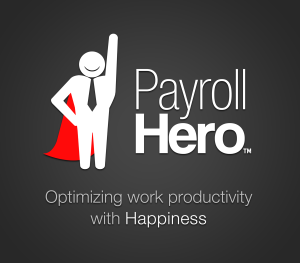![]() Yesterday, Aulia and I stepped out of the office after work and headed to Ayer Rajah Crescent for a Meetup. It was on Mastering SEO to Boost User Acquisition, hosted by Growth Hacking Asia and Silicon Straits Co.Lab. Growth Hacking Asia is an organisation that advises Asian startups on how to succeed. The speaker was Jeff Li, SEO Manager at Expedia Asia and Head of SEO at AirAsiaGo. Jeff gave us some invaluable insight that we thought we should share and spread the love a little bit.
Yesterday, Aulia and I stepped out of the office after work and headed to Ayer Rajah Crescent for a Meetup. It was on Mastering SEO to Boost User Acquisition, hosted by Growth Hacking Asia and Silicon Straits Co.Lab. Growth Hacking Asia is an organisation that advises Asian startups on how to succeed. The speaker was Jeff Li, SEO Manager at Expedia Asia and Head of SEO at AirAsiaGo. Jeff gave us some invaluable insight that we thought we should share and spread the love a little bit.
Jeff first explained to us how Google crawlers work. Page rankings are based on how relevant the page is according to Google. The factors that make up relevance involve keywords, links that lead to your page, quality of links, responsiveness of your page and site structure to name a few.
While keywords are important, Jeff says:
“SEO strategy has shifted from
keyword focused to topic focused”
Content in your website is key to bringing in traffic. The search user’s journey begins with the Search Interest, then to the Search Engine Results Page, followed by the landing page and finally the conversion from just a page visit to the action that we want the user to take. Therefore, having content that is relevant and useful to your target audience will get more hits and pull up your rankings.
A good reminder about content: Content should be shared in a way that makes your site look original, not in an attempt to crack Google’s algorithm.
Next, focusing on content will get you nowhere unless you know where to put it. Spamming is a big no-no because it creates a bad name. Paying a blogger a minimal fee to write about you may backfire if the channel that the blogger posts it on is not relevant to you. However, asking a guest blogger to write on your site may bring links back to you. Similarly, writing about another blogger and going by a pay-it-forward philosophy is great for both parties’ site traffic and creates goodwill: something like good internet karma.
While we are on the topic of linking, we never forget to link our site’s homepage to different parts of the site like the product category, the merchant page and general content pages. These pages are further linked to our products. However, linking these pages back up the chain is important too. A good internal linking strategy keeps the user on the site by giving more relevant information, which could lead to a higher conversion rate.
Jeff then gave some neat tools to learn how to optimize websites. Screaming Frog is a tool that simulates search engine crawlers. It helps you understand whether your site is accessible by crawlers. Google Search Console (previously known as Google Webmaster) is a great tool to pull up your page rankings and “be found”, as Google puts it.
With all these tools, the 2 biggest challenges with SEO are the following:
- Understanding the huge amount of data that you have on your site
- Figuring out what your competitor is doing
While the second point is an inevitable evil, we can do more about the first point. When asked what an SEO team should aim for, Jeff gave us some KPIs:
- Conversion rate
- Traffic
- Rankings
The second and third points lead back to the first: how to generate leads by first generating traffic, then pulling up your page rankings and eventually taking off your business from there. Simple in theory, but an elusive concept at best.




 Cloud Computing, by
Cloud Computing, by  Employee benefits are a growing concern for human resource (HR) administrators. South East Asia (SEA) lags behind the global average in terms of providing employee benefits. However, when it comes to maternity leave, the situation has been improving.
Employee benefits are a growing concern for human resource (HR) administrators. South East Asia (SEA) lags behind the global average in terms of providing employee benefits. However, when it comes to maternity leave, the situation has been improving.



 ted on increasing productivity: be it that of your rank and file workers or your manager. Higher productivity leads to a better workplace environment and happier people, which further leads to higher productivity. That is a virtuous cycle, if ever I saw one. In effect: optimizing work productivity with happiness.
ted on increasing productivity: be it that of your rank and file workers or your manager. Higher productivity leads to a better workplace environment and happier people, which further leads to higher productivity. That is a virtuous cycle, if ever I saw one. In effect: optimizing work productivity with happiness.
 Q. When and why did you start Advent?
Q. When and why did you start Advent? We launched XO46 Heritage Bistro later that year. It is an advocacy-driven brand whose purpose is to bring forward the best of Filipino cuisine while being an instrument to preserve our vanishing food heritage (no thanks to the influx of fusion cuisine).
We launched XO46 Heritage Bistro later that year. It is an advocacy-driven brand whose purpose is to bring forward the best of Filipino cuisine while being an instrument to preserve our vanishing food heritage (no thanks to the influx of fusion cuisine). I am somewhat of a strange mutt. I am an economist by training…politics is my interest…the hospitality industry is where my expertise lie.
I am somewhat of a strange mutt. I am an economist by training…politics is my interest…the hospitality industry is where my expertise lie.

